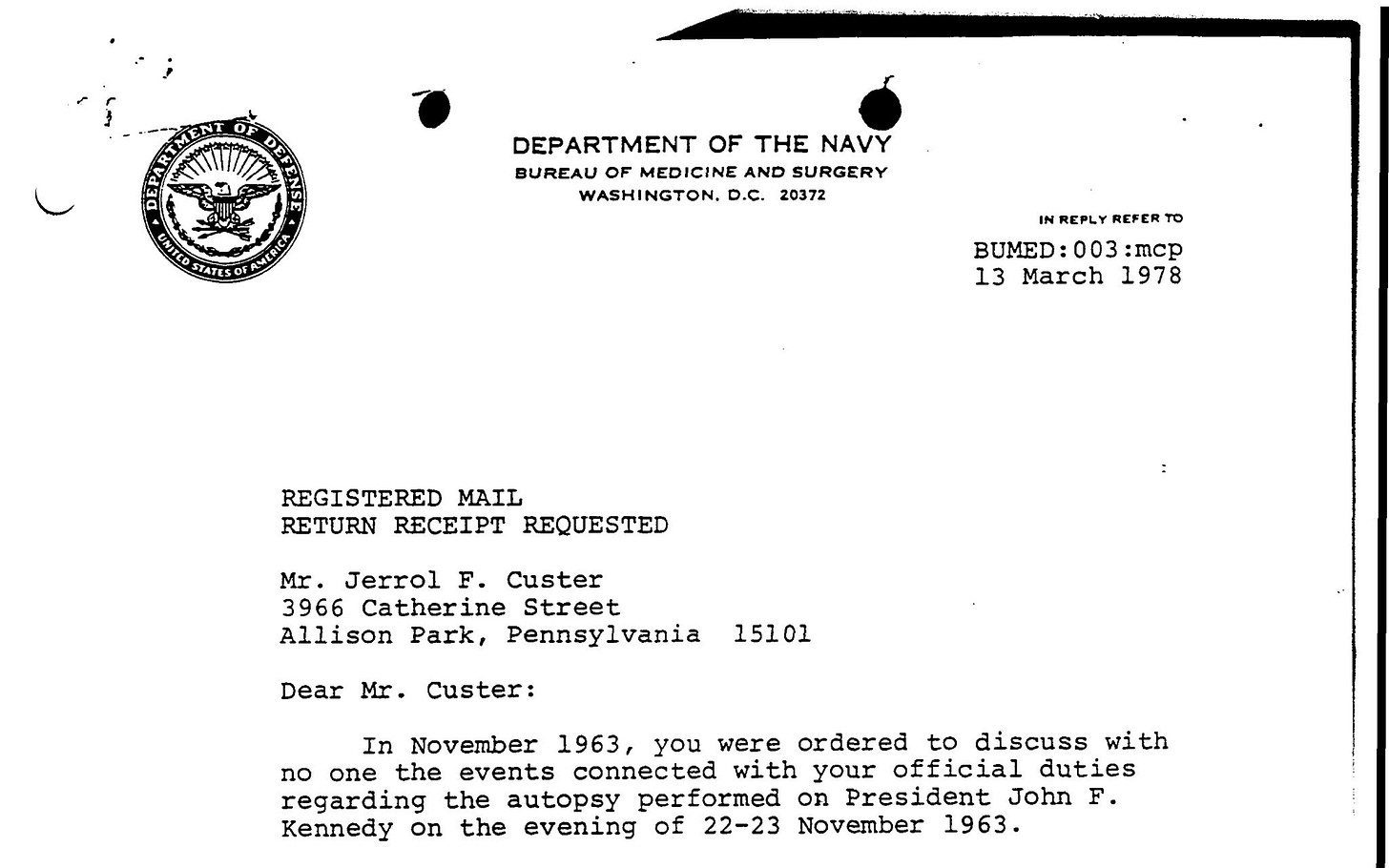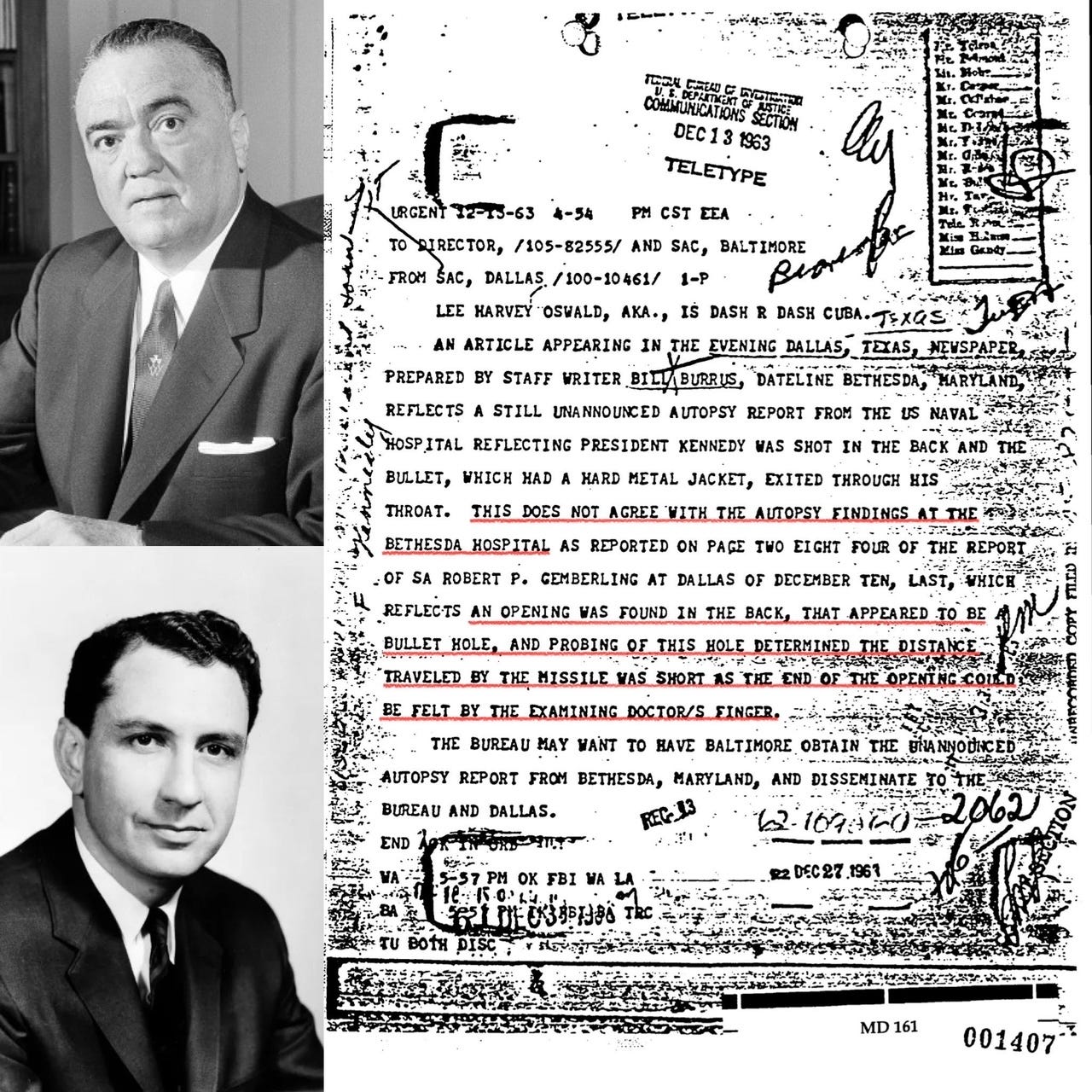JFK Doctors Were Slapped with Gag Orders
Physicians at JFK's autopsy received letters of silence
For the past 60 years, there has been much debate over the findings of the official autopsy for President John F. Kennedy. What is certain is that newly-declassified JFK files show the autopsy physicians at Bethesda Naval Hospital in Maryland were compelled to sign letters of silence under threat of court martial, and for good reason: what they saw contradicted the official theory of a “lone gunman.”
The wounds observed by the doctors at Parkland and Bethesda, as well as FBI agents James Sibert and Francis O’Neill, were not consistent with the government’s claim that JFK was shot from behind by Lee Harvey Oswald. Aside from multiple witnesses claiming to see a gaping wound at the rear of the President’s skull, a shallow bullet wound was discovered in his back that could be probed by a finger, contradicting the controversial ‘single bullet’ theory later put forward by Arlen Specter.
Keep reading with a 7-day free trial
Subscribe to JFK Facts to keep reading this post and get 7 days of free access to the full post archives.





